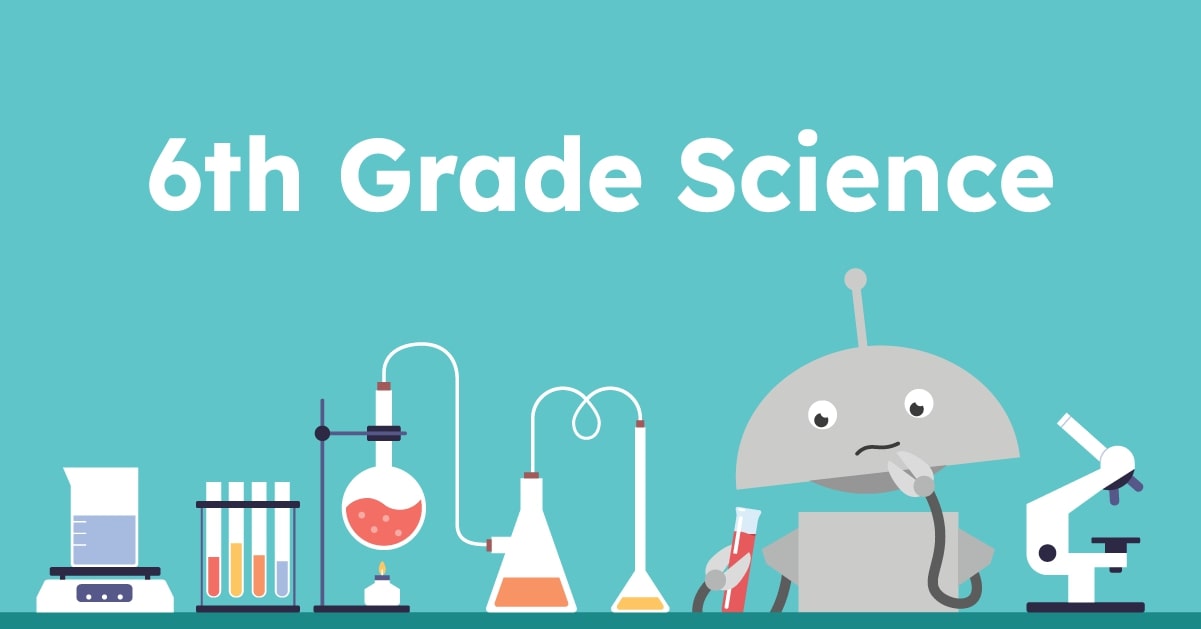6th Grade Science Curriculum
Middle school is an exciting time for students to dive deeper into science and discover how our world works!
Our sixth-grade science curriculum sparks curiosity about Earth and its place in the solar system, guiding students through engaging lessons on weather, climate, rocks, and how our planet interacts with living things. By combining hands-on activities, data analysis, and creative projects, we help students build strong science skills and make meaningful connections to the world around them.
Sample Lesson
You can find more of our sixth-grade science videos on Youtube at The Miacademy Learning Channel!
Is my student ready for 6th grade science lessons?
Before beginning sixth-grade science, we recommend students understand fifth-grade science topics or complete our fifth grade-science curriculum, Structures of Science.
Your student is likely ready for sixth grade science if they can:
- Understand basic properties of matter, including simple mixtures and solutions
- Explain simple energy concepts, like sources of energy (light, heat, electricity) and how energy moves from one place to another
- Identify patterns in the natural world, such as seasonal changes or the life cycles of plants and animals.
- Use measurement tools accurately, including thermometers, rulers, balances, and graduated cylinders.
- Collect, record, and organize data in charts, tables, or simple graphs.
- Describe cause-and-effect relationships, such as how one change in an environment can affect living things.
- Follow the steps of a scientific investigation, including forming a question, predicting an answer, testing the experiment, and sharing results.
- Communicate ideas clearly, both by writing and by talking about observations and conclusions.
Free 6th Grade Science Worksheets – PDF Download
Each video lesson has printable science worksheets with additional activities to extend learning beyond the screen with a hands-on approach!
Click here to download a free sample PDF of our sixth-grade science worksheets:
What are the 6th-grade science standards?
Sixth-grade science standards are focused on everything Earth science — from how landforms are created to how weather works and how living things (including us!) interact with the Earth’s natural resources. Some common sixth-grade science standards include:
- Defining a problem and describing what makes a good solution, with limits like time or cost
- Showing how energy and matter move between living things and their environment
- Using data to explain how food, water, or shelter affects plants and animals in an ecosystem
- Designing experiments to answer questions, like ways to track the impact humans have on the environment or how energy moves through different materials
- Describing how water moves through the water cycle, powered by the sun and pulled by gravity
- Using a model to explain why we have seasons, lunar phases, and eclipses
- Explaining how heating or cooling changes how particles move and whether something is solid, liquid, or gas
- Building models to show what atoms and molecules look like in different materials
Standards can vary by state, so be sure to check what’s required where you live.
Scope and Sequence
6th Grade – Earth Science
Science in sixth grade focuses on the Earth’s matter and resources, its landforms, atmosphere, and oceans and the ways that humans interact with it. Students will explore a range of natural phenomena, such as seafloor spreading, the rock cycle, weather patterns, and more. Students will also learn about human impacts on the environment, such as air pollution and our use of natural resources.
Miacademy’s 6th-Grade Science Curriculum for Homeschool
Our middle school science curriculum helps students explore our amazing planet and its place in the solar system! Through hands-on experiments, data-driven projects, and interactive activities, students are encouraged to think critically, use their scientific observation skills, and connect what they learn to the real world.
Plus, one of the best things about our K-8 science curriculum is homeschooling with flexibility! You get full customization over your lesson plans and assignments to fit your child’s unique learning needs. Students can pick up where they left off and begin working on new topics.
Our family of accredited curricula covers everything from lab safety to physics and chemistry and adapts easily to your child’s educational needs.
Whether you homeschool full time or are looking to supplement a public school education, we’re here to support you! Wondering if Miacademy’s sixth-grade homeschool curriculum can be a good fit for your student? Start a chat with one of our friendly customer service agents below! They’ll be happy to help you with any questions you may have.



